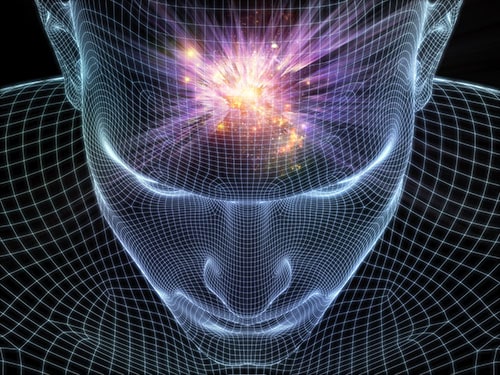The profession of bioresonance practitioner

At a time when more and more people are turning to natural and alternative approaches to improve
their well-being, the profession of bioresonance practitioner is attracting growing interest.
Combining advances in quantum physics with a holistic view of the human body, bioresonance
offers a method of energy analysis and balancing that is as intriguing as it is appealing.
But what does this profession actually involve? What skills are required, what tools are used, and
what are the benefits for clients? This article takes a look at a profession that is still relatively unknown but rapidly expanding.
1. What is bioresonance?
Bioresonance is a non-invasive method based on the idea that every cell, tissue or organ in the body
emits its own electromagnetic frequency. When these frequencies are disrupted – by stress, toxins,
pathogens or emotional imbalances – dysfunctions can arise.
The principle of bioresonance is to detect these disturbances using a specific device (such as
Biospect®, Oberon, Bicom, etc.), then send corrective frequencies to restore balance. The
practitioner acts as an intermediary between the technology and the person, interpreting the energy
data, making an assessment and implementing a reharmonisation strategy.
2. Role and responsibilities of the bioresonance practitioner
The bioresonance practitioner is not a doctor. They do not make medical diagnoses or prescribe
pharmaceutical treatments. Their role is different: they work on the vibrational level, supporting the
person in a process of overall well-being.
Their main responsibilities are:
- Welcoming and listening to the client, understanding their physical, emotional or energetic
issues - Performing an energy assessment using the bioresonance device, scanning different systems
(organs, tissues, meridians, chakras, etc.) - Analysing the results to identify imbalances, blockages or toxin overload
- Performing frequency corrections, often over several sessions, to help the body regain its
homeostasis - Providing personalised advice on lifestyle, nutrition, herbal medicine, dietary supplements
and stress management
In some cases, practitioners may work in collaboration with conventional or alternative health
practitioners, creating an integrative approach to care.
3. Required skills
The profession requires technical knowledge, energy sensitivity and genuine human qualities. The key skills of a good practitioner:
- Proficiency in the use of bioresonance equipment: each device has its own specific features.
It is essential to be trained in its use, in reading data and in adjusting protocols - Knowledge of anatomy, physiology and bioenergy: without being a doctor, practitioners
must understand how the human body works and its energy networks - Listening and empathy skills: understanding clients’ needs, creating a climate of trust,
providing support without judgement - Analytical mind: interpreting results, making connections between physical signs and
energetic or emotional causes. - Ethics and professional discretion: respect professional confidentiality and the limits of one’s
own practice
4. Training and career path
The profession is not regulated, which means that no official qualification is required to practise.
However, serious training is strongly recommended to ensure professional, ethical and effective
practice.
Training may be offered:
- By equipment suppliers (e.g. training in the use of Biospect® or Bicom)
- By private schools specialising in energy therapies, often in person or online
- Through additional modules: anatomy, nutrition, naturopathy, biological decoding, etc.
Some training courses award bioresonance practitioner certificates, which can reassure clients and
bring recognition within professional networks.
5. Tools used
Practitioners work with a bioresonance device. There are several technologies available on the
market:
- Biospect® / Oberon / Hunter (all NLS bioresonance): non-linear technologies (NLS) that
scan the information field and simulate organ resonances - Bicom: a German system based on electromagnetic frequencies, widely used in anti-allergy
therapies - Physioscan, Physiospect, Metatron: other variants of NLS technologies depending on the
country and manufacturer
Some practitioners supplement their approach with tools such as:
- Tesla plates, frequency generators, PEMF devices
- Quantum analysis software, aura field or emotional field reading software
- Accessories for applying frequencies: electrodes, headphones, patches, etc.
6. Target audience and types of requests
Bioresonance attracts a diverse audience: people seeking natural solutions, hypersensitive
individuals, chronic patients disappointed with conventional solutions, athletes, children, pets,
etc.
The most common reasons for consultation are:
- Chronic fatigue, sleep disorders, stress
- Digestive, skin and respiratory disorders
- Allergies or inflammatory conditions
- Heavy metal poisoning, pollutants
- Seeking emotional or spiritual rebalancing
Practice can be occasional or part of regular follow-up, with sessions spaced out over several weeks
or months. It is never intended to replace a diagnosis for medical treatment, but rather to support the
body through natural solutions.
7. Practical aspects and professional development
Practitioners can work:
• In an independent practice
• In a wellness centre or multidisciplinary facility
• At home or remotely (some technologies allow this)
Developing the business requires:
• A local network (word of mouth, professional partners)
• An online presence (website, social media, testimonials)
• A customer loyalty strategy, through personalised follow-up and practical advice
Rates vary depending on the region and equipment, generally between £60 and £120 per session.
8. Ethics and recognition
Although bioresonance is not yet recognised by traditional health authorities, more and more
professionals are committing to a rigorous and transparent approach, aware of the limitations of the
method. Ethics dictate that practitioners must never interfere with ongoing medical treatment or promise
cures.
The future of the profession lies in better structuring, certified training and highlighting the concrete
results observed in clients.
Conclusion
Bioresonance practitioners embody a new generation of wellness and prevention professionals, at
the crossroads of science, energy and humanity. By combining cutting-edge technology with a
holistic approach, they offer a different way of listening to the body and its signals, while respecting
the individual and their autonomy. Although the path is not yet fully institutionalised, it offers great prospects for those who wish to work towards integrative, preventive and vibrational health.